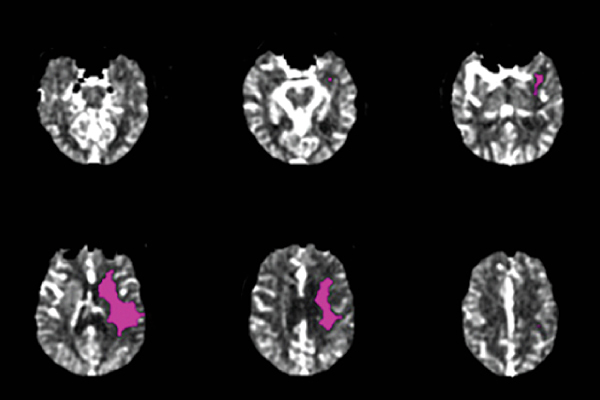BACKGROUND
Thrombectomy is currently recommended for eligible patients with stroke who are treated within 6 hours after the onset of symptoms.
METHODS
We conducted a multicenter, randomized, open-label trial, with blinded outcome assessment, of thrombectomy in patients 6 to 16 hours after they were last known to be well and who had remaining ischemic brain tissue that was not yet infarcted. Patients with proximal middle-cerebral-artery or internal-carotid-artery occlusion, an initial infarct size of less than 70 ml, and a ratio of the volume of ischemic tissue on perfusion imaging to infarct volume of 1.8 or more were randomly assigned to endovascular therapy (thrombectomy) plus standard medical therapy (endovascular-therapy group) or standard medical therapy alone (medical-therapy group). The primary outcome was the ordinal score on the modified Rankin scale (range, 0 to 6, with higher scores indicating greater disability) at day 90.
RESULTS
The trial was conducted at 38 U.S. centers and terminated early for efficacy after 182 patients had undergone randomization (92 to the endovascular-therapy group and 90 to the medical-therapy group). Endovascular therapy plus medical therapy, as compared with medical therapy alone, was associated with a favorable shift in the distribution of functional outcomes on the modified Rankin scale at 90 days (odds ratio, 2.77; P<0.001) and a higher percentage of patients who were functionally independent, defined as a score on the modified Rankin scale of 0 to 2 (45% vs. 17%, P<0.001). The 90-day mortality rate was 14% in the endovascular-therapy group and 26% in the medical-therapy group (P=0.05), and there was no significant between-group difference in the frequency of symptomatic intracranial hemorrhage (7% and 4%, respectively; P=0.75) or of serious adverse events (43% and 53%, respectively; P=0.18).
CONCLUSIONS
Endovascular thrombectomy for ischemic stroke 6 to 16 hours after a patient was last known to be well plus standard medical therapy resulted in better functional outcomes than standard medical therapy alone among patients with proximal middle-cerebral-artery or internal-carotid-artery occlusion and a region of tissue that was ischemic but not yet infarcted. (Funded by the National Institute of Neurological Disorders and Stroke; DEFUSE 3 ClinicalTrials.gov number, NCT02586415.)
See full text at:
http://www.nejm.org/doi/full/10.1056/NEJMoa1713973?query=featured_home

